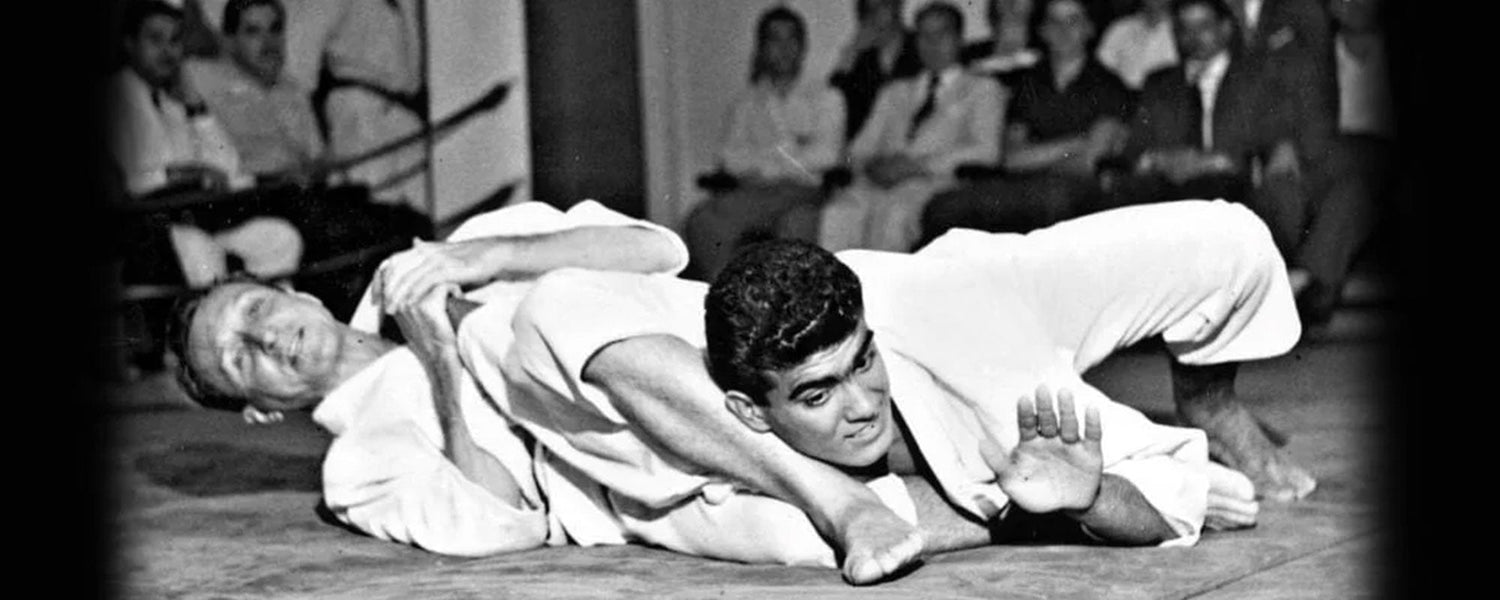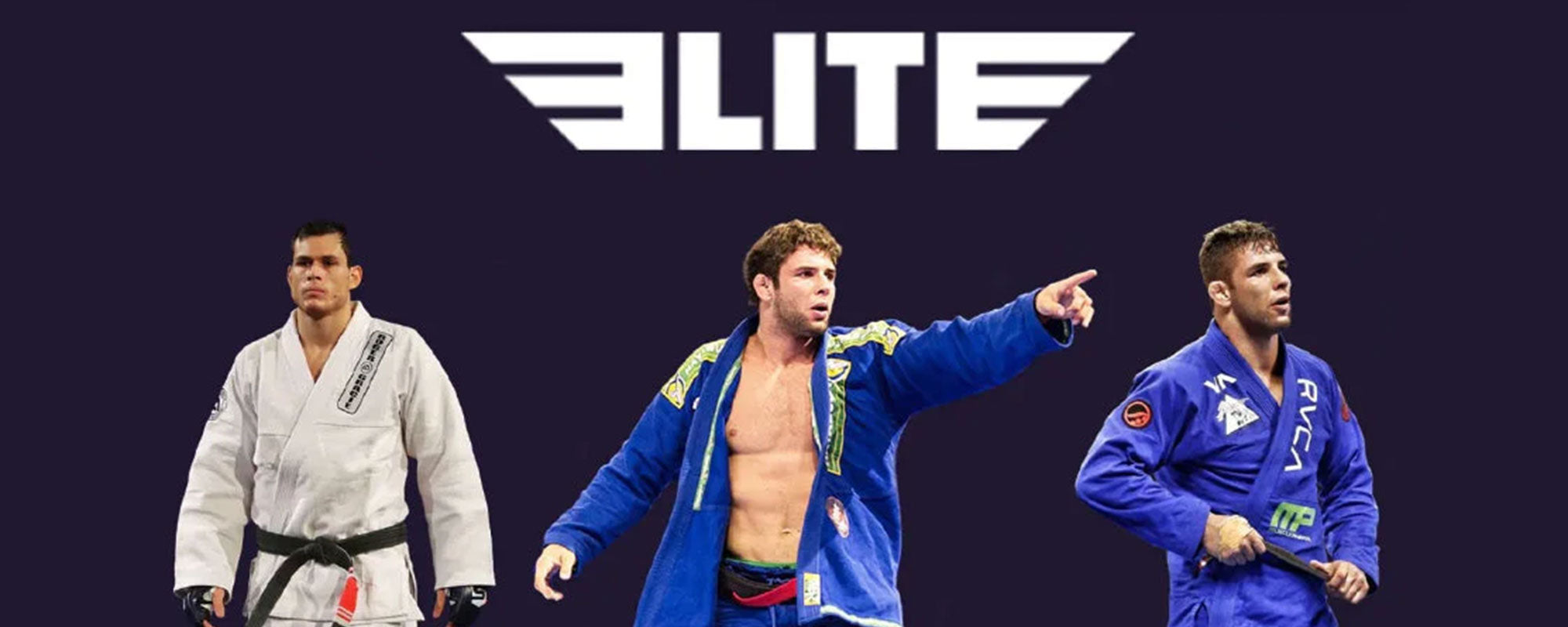Table of content
The term Brazilian jiu-jitsu seems common to modern-day combat sports enthusiasts.
Everyone who knows about the world of wrestling and fighting has certainly heard of Brazilian jiu-jitsu.
This grapple-based fighting style, 90% of which is fought on the ground, has become the second most dominating fighting style in the world as per UFC wins.
But let’s go through a brief journey through time and look at the origins of BJJ and rediscover how BJJ became part of the modern MMA.
1. What is the Origin of Brazilian Jiu Jitsu?

The answer to the question, where and when did jiu jitsu start, is India. Buddhist monks in the continent created what resembles jiu jitsu.
Here’s how it happened.
1.1. 356 BC: Buddhist Monks Perfect the Art of Subduing Opponents
Jiu jitsu, contrary to what many might believe, came from Indian Buddhist monks. It is believed that the culture was transferred to Asia by Alexander the Great.
Historical records show the Ancient Greek Olympic Games that hosted Pankration.
This was a sport that involved grappling, wrestling, boxing and anything except for biting and gouging.
However, in India, most believe the technique of jiu jitsu was invented and perfected by Buddhist monks who had to cover long distances alone and were frequently attacked by bandits.
Their sentiments and morality of devotion to love and peace became the origin of this martial art.
Since they were against unnecessary violence, they derived jiu jitsu as an unarmed self-defense measure.
Fighting with superior knowledge and control of the body to subdue, rather than kill their opponent.
This also explains (to some extent), the use of a BJJ Gi.
However, this is where those who know the involvement of Judo in BJJ would argue that there’s no way Judo was in India.
It’s true, jiu jitsu that we see today traces its origins back to 14th century Japan.
1.2. 1400-1800s: Japanese Samurai Build Upon Jiu Jitsu
The Japanese army consisted of the warrior samurai caste that specialized in perfecting combat styles to enhance their efficiency as soldiers on the battlefield.
When it was clear that kenjutsu (an umbrella term for all forms of swordsmanship) was ineffective in situations where samurai found themselves disarmed, they developed upon the knowledge of jiu jitsu.
Although it literally means gentle art, jiu jitsu proved to be one of the most dominating fighting styles that allowed the samurai to best their opponents on the ground.
1.3. 1870’s: Origins of Judo
In the 19th century, the art of jiu jitsu spread across regions and was now present in many distinct styles or ‘ryu’ (ree-you).
All these styles incorporated weapon use, ground-based fighting moves as well as grapples and strikes.
One practitioner of the art, by the name of Jigoro Kano, started studying jiu jitsu and developed his own style of fighting in 1877.
This ‘ryu’ revolved around the concept of ‘randori’ or free practice which was different from the partner practice that prevailed at the time.
Kano’s ryu, what he called Kodokan, was introduced in 1882.
Kodokan went on to become Judo, one of the most practiced combat sports in years to come.
1.4. 1904: Mitsuyo Maeda, the Jiu Jitsu Master Dominates the West
Jigoro Kano went on to teach many disciples, many of whom became legendary fighters that are cherished to this day.
One of these was Mitsuyo Maeda, the man who introduced Jiu Jitsu in the west.
Mitsuyo Maeda was a Kodokan School instructor when he decided to travel to Europe and America to compete.
His arrival in the west was solely for the promotion of Judo (based upon jiu-jitsu) and to test it out in competition with other fighting styles of the world.
However, the world wasn’t ready for Mitsuyo Maeda or any of the Jiu Jitsu and Judo practitioners as renowned athletes from England, Belgium, Spain and America fell one after the other.
The fact that the losers of the matches were easily twice or thrice the weight and size of the winner was truly astonishing for the world.
This led to the world becoming increasingly curious about how Jiu Jitsu worked.
Maeda’s presentation and challenges in Costa Rica, Honduras, Panama, Columbia, Ecuador, Argentina, Peru, Chile and El Salvador proved that his fighting style reigned supreme.
Legend has it that Maeda was once challenged by a capoeira artist by the name of Pe de Bola.
Pe De Bola was a 6’3” man who weighed at least 100 kgs. Whereas, Maeda was only 5’5” and weighed around 68kg for most of his life.
What’s really awesome is that before the fight, Maeda allowed the towering giant to use a knife throughout the fight.
Unscathed, Maeda finished him off and proved his superiority. Although it’s unclear when it was first coined, Maeda eventually earned the title, Count Koma.
Count Koma introduced the first ten rules that laid the foundations for modern BJJ competitions.
1.5. 1914: Maeda Settles Down in Brazil
The turning point of jiu jitsu history came when Maeda settled down in Brazil as part of a large Japanese immigration colony.
Luckily, Maeda made friends with Gastao Gracie, who was an influential businessman at the time.
Gracie went on to help Maeda get himself established in Brazil. To show his gratitude, Maeda agreed to teach Gracie’s oldest son, Carlos Gracie, his martial art.
This was the pivotal moment of BJJ history as many know the importance of the Gracie family in Brazilian Jiu Jitsu.
1.6. 1917: Carlos Gracie Learns BJJ from Mitsuyo Maeda
Carlos Gracie, brother of 7 siblings, taught 4 of his brothers the art he had learned.
Grandmaster Carlos Gracie is regarded as the one who started Brazilian Jiu Jitsu.
Although it went against their mother’s wishes of having a family of doctors and engineers, the Gracie brothers developed a passion for Jiu Jitsu.
Eventually, each member of the family at the time as well as successors played a huge role in developing and promoting modern-day BJJ in the world.
1.7. 1925: The Foundation of the First Gracie BJJ Academy
After having spent years practicing and perfecting his art, Carlos Gracie went on to lay the foundations of the Gracie Family’s first BJJ Academy.
This was also the start of what would later be known as the Gracie Jiu Jitsu, a fighting style that would later be divided into individual fighting styles and schools of thought of BJJ named after and taught by various members of the family.
1.8. 1967: Jiu Jitsu Federation of Guanabara
One of Carlos’ brothers, Helio was deemed physically unfit for jiu jitsu or any other form of combat sports for that matter.
Doctors recommended that Helios refrained from physical exertion.
However, one day, in Carlos’ absence, Helio Gracie, 16 at the time, offered to teach a student who was waiting for Carlos.
Since he had memorized all the techniques taught by his brothers, he had no problems dispensing the lesson on to the student who later asked Carlos to continue lessons from Helio, who from then on, became an instructor.
Later in life, Helio Gracie worked towards laying the foundations for the Jiu Jitsu Federation of Guanabara with him as president.
The federation standardized rules for the sports, such as competition time, the belt system, distinguished between legal and illegal techniques and movements, and age divisions
1.9. 1972 - 1978: BJJ is Taught in the United States
Jiu jitsu by this time was not in the traditional form that was taught by Maeda all those years ago.
It had evolved into something the Gracie family had made with experiences gained through countless battles around the world.
By 1972, Carley Gracie de his way into the United States to teach the first BJJ classes in the country.
Six years after his arrival, Rorion Gracie settled down in California and opened up his own school.
1.10. 1978 - 1993: BJJ and UFC
Most of the decade between the late ’70s and early ’90s involved the Gracie family setting up roots and promoting BJJ as one of the top-performing martial arts in combat sports.
It was around the 1980s that people started referring to this Jiu Jitsu as Brazilian Jiu Jitsu.
However, for those asking when was Brazilian jiu jitsu created, the answer is back in 1917, when Carlos Gracie learned jiu jitsu and made it his own.
This was solely because most of the pioneers, founders, professors and participants practicing the jiu jitsu style came from Brazil.
This eventually reaped fruit as Rorion Gracie eventually laid the foundation of the Ultimate Fighting Championship in 1993, an event that would later lead to the formation of modern-day MMA.
Royce Gracie, the modern-day legend, entered the tournament and proved that none could best the BJJ athlete.
Resulting in the groundbreaking success that the Gracie family was hoping for, Royce singlehandedly promoted BJJ all across the world with his unparalleled success.
1.11. 1994: IBJFF Founded
Following October 7, 1994, Grandmaster Carlos Gracie died, leaving his son Carlos Gracie Jr. to continue his work.
Set towards promoting the sport as his father did, Carlos Gracie Jr. worked and laid the foundation for the International Brazilian Jiu Jitsu Federation.
The IBJJF had set its own rules as standards for any competition. This organization is now the largest in the world to hold BJJ tournaments.
1.12. 2012: Formation of Modern SJJIF and BJJ Globetrotters
By this time, the sport was internationally practiced and respected.
However, some argue that there wasn't an established international federation at the time.
This led to the founding of the Sport Jiu-Jitsu International Federation and BJJ Globetrotters.
While this caused complications, there emerged yet another system of standardized rules for BJJ that is followed in many areas.
1.13. 2014: Foundation of JJGF and Modern BJJ
Rickson Gracie had a desire to run a federation for over 20 years but his profession and career didn’t give him much time until later on.
It was only when he met Tony Pacenski in 2013, a master’s degree holder in Education who wanted 5 minutes of Rickson’s time to propose a plan, that the plan actually took off.
After several legal and political issues, the foundation was finally laid for the next international federation of Brazilian Jiu Jitsu.
The founding members of the Jiu Jitsu Global Federation in 2014 were Rickson, Tony and Carlos Gama (a family friend of Rickson).
Jiu Jitsu Global Federation has now become an international governing body of jiu jitsu.
Rickson Gracie, son of the legendary Helio Gracie is also the father of the current UFC-signed fighter, Kron Gracie.
Rickson and his son have earned a reputation for being two of the most influential BJJ athletes in the contemporary world.
Although he was recently nominated for the red belt, the highest in Brazilian Jiu Jitsu, Rickson Gracie humbly denied the promotion, claiming he had not yet met the time requirements for the rank as per IBJJF standards.
Other modern names of 2021 athletes include Ronaldo Pereira de Souza Júnior, Claudia Fernanda Onofre Valim Doval, Fellipe Andrew Leandro Silva and Nathiely Karoline Medo de Jesus, to name some.
2. A Final Word
Starting from 350 BC to 2021, Jiu Jitsu and Brazilian Jiu Jitsu have become known across the world.
Even now, techniques and styles continue to evolve as each fighter of different backgrounds develops counters, takedowns, grapples, escapes, etc.
For those who’re in the game, know your history and the present-day fighting industry.
Whereas, for those who aren’t, here’s all you need to know to get started in BJJ.
Photo Credit: oldschool.bjj











Leave a comment
This site is protected by hCaptcha and the hCaptcha Privacy Policy and Terms of Service apply.